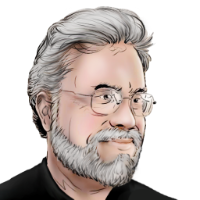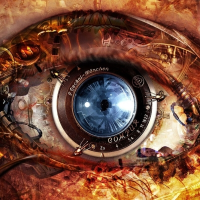
Director The Director script supports "theater of the mind" style play in Roll20. It provides an interface for managing scenes, associated images, audio, and relevant game assets — all organized within a persistent interactive control panel handout. [ Video Demo ] Available in One-Click install on your mod page. Interface Overview The interface appears in a Roll20 handout. It consists of four main sections: Acts & Scenes — scene navigation and management Images — backdrops, highlights, and associated tracks Items — characters, variants, macros, and other token types Utility Controls — edit mode, help toggle, settings, backup Acts & Scenes Act Controls Acts group together related scenes. Use the + Add Act button to create an act. In Edit Mode , act-level options include: Rename or delete the act Move the act up or down Scene Controls Each scene represents a distinct time and place. Click a scene name to set it active. The active scene determines what appears in the Images and Items sections. In Edit Mode , scene controls include: Rename / Delete Move Up / Down — if moved past the end of an act, the scene moves to the top of the next expanded act Images Backdrop vs. Highlight Backdrop is the main background image for the scene, displayed on the map layer to set the overall environment. Highlights are supplementary images layered above the backdrop on the object layer, used to draw attention to specific elements or areas. When a scene is set, the backdrop is placed on the map layer, while all highlights appear on the object layer, aligned left beyond the page boundary for easy visibility and interaction. To use a highlight, the gm can drag it onto the page, or select it and use the shift-Z keyboard command to preview it to the players. Highlights and Bacdrops can be switched on the fly by using the buttons found on each image in the handout (see below) Adding Images To add an image: Drag a graphic to the tabletop. Hold Alt / Option while dragging to preserve aspect ratio. Select the graphic and click + Add Image at the top of the Images section. Image Controls Title Overlay : click to rename the image Bottom-right icons : ` Set as backdrop | Set as highlight m Assign track (uses currently playing audio). When an image that has a track is made into the Backdrop image, and track assigned to it immediately starts playing. In Edit Mode : move, recapture, and delete options appear in the top-right corner Items (Characters, Variants, Tracks, Macros, Tables) Items define what is placed or triggered when a scene is set. Items are scoped per scene. Adding Items Click a badge to add a new item: H C V T M R Item Behavior H Handouts : Opens the handout C Characters : Opens the sheet if assigned; otherwise, prompts assignment V Variants : Does not open — appears on scene set T Tracks : Toggles playback if assigned; otherwise assigns currently playing track M Macros : Runs the macro if assigned; otherwise prompts to assign an existing macro R Rollable Tables : Rolls the assigned table; otherwise prompts to assign one. Results are whispered to the GM Variants are token snapshots that share a sheet. Use these when default tokens cannot be reliably spawned, or to represent unique versions of a shared character sheet. Edit Controls In Edit Mode, each item shows: p — Reassign # — Delete Filter: Click the magnifying glass button to filter items by type. Header Buttons Set Scene Set the Scene populates the tabletop with: Backdrop image (Map Layer) Highlight images (Object Layer, left-aligned off page edge) Character and variant tokens (Object Layer, right-aligned off page edge) Starts assigned track (if set) Only works if the current page name contains: scene, stage, theater, theatre Wipe Scene Wipe the Scene removes all placed images and stops all audio. Only functions on valid stage pages. Edit Mode The lock button toggles editing. When enabled: Rename, delete, and move controls appear for acts, scenes, and images Items are grouped by type and display reassign/delete controls JB+ If Jukebox plus is installed in your system, Director can detect this and provide a button to open that interface. Help Displays on-screen help. Click "Exit Help" to return to the control panel. Helpful Macros The interface is primary, but the following macros can be used in chat or action buttons: !director --set-scene
!director --wipe-scene
!director --new-act|Act I
!director --new-scene|Act I|Opening Scene
!director --capture-image










